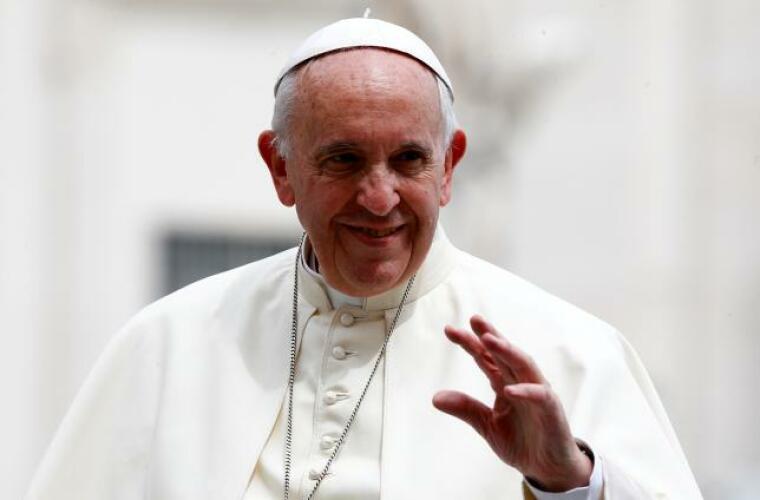Benedict XVI's right-hand man ignites controversy on 'papal diarchy'

The controversy on whether the Roman Catholic Church has two ruling popes is ignited following comments made by the personal secretary and right-hand man of Pope Emeritus Benedict XVI who referred to an "expanded ministry."
Also the prefect of the Pontifical Household, Archbishop Gänswein made controversial statements during a book presentation at the Pontifical Gregorian University in Rome on May 20 that either clarified or confused the current state of papacy, as reported by Religion News Service.
Although the Pope Emeritus resigned from the Papal Throne on Feb. 11, 2013, Gänswein claimed that Benedict XVI "has not abandoned this ministry" and that
it was "quite impossible after his irrevocable acceptance of the office in April 2005."
Gänswein described the controversial resignation in 2013 "as if he had taken only one step to the side to make room for his successor and a new stage in the history of the papacy."
He then proceeded to clarify that the Vatican doesn't have two popes "but de facto an expanded ministry," referring to Pope Francis as the active member while pointing to Benedict XVI as the contemplative member.
Using Pope Celestine V as reference, the first pope to retire from the papacy, Gänswein explained why Benedict XVI has not reverted back to his baptismal name nor stopped wearing the white papal cassock even after resignation. Gänswein also added that Benedict XVI continues to stay in the Vatican.
Gänswein described the papal ministry as "a foundation that Benedict XVI has profoundly and lastingly transformed during his exceptional pontificate" while declaring it as "not the same as before."
Benedict XVI's long-time personal aide called him "so bold as to open the door to a new phase, for that historic turning point that five years ago no one could have imagined."
A blogger by the name of Augustinus caught on Gänswein's statements and recalled the writings of Antonio Socci and Vittorio Messori published in early 2014 discussing a theory of diarchy in the papacy.
 Christians don't have to affirm transgenderism, but they can’t express that view at work: tribunal
Christians don't have to affirm transgenderism, but they can’t express that view at work: tribunal Archaeology discovery: Medieval Christian prayer beads found on Holy Island
Archaeology discovery: Medieval Christian prayer beads found on Holy Island Presbyterian Church in America votes to leave National Association of Evangelicals
Presbyterian Church in America votes to leave National Association of Evangelicals Over 50 killed in 'vile and satanic' attack at Nigerian church on Pentecost Sunday
Over 50 killed in 'vile and satanic' attack at Nigerian church on Pentecost Sunday Ukrainian Orthodox Church severs ties with Moscow over Patriarch Kirill's support for Putin's war
Ukrainian Orthodox Church severs ties with Moscow over Patriarch Kirill's support for Putin's war Islamic State kills 20 Nigerian Christians as revenge for US airstrike
Islamic State kills 20 Nigerian Christians as revenge for US airstrike Man who served 33 years in prison for murder leads inmates to Christ
Man who served 33 years in prison for murder leads inmates to Christ


 Nigerian student beaten to death, body burned over ‘blasphemous’ WhatsApp message
Nigerian student beaten to death, body burned over ‘blasphemous’ WhatsApp message 'A new low': World reacts after Hong Kong arrests 90-year-old Cardinal Joseph Zen
'A new low': World reacts after Hong Kong arrests 90-year-old Cardinal Joseph Zen Iran sentences Christian man to 10 years in prison for hosting house church worship gathering
Iran sentences Christian man to 10 years in prison for hosting house church worship gathering French Guyana: Pastor shot dead, church set on fire after meeting delegation of Evangelicals
French Guyana: Pastor shot dead, church set on fire after meeting delegation of Evangelicals ‘Talking Jesus’ report finds only 6% of UK adults identify as practicing Christians
‘Talking Jesus’ report finds only 6% of UK adults identify as practicing Christians Mission Eurasia ministry center blown up in Ukraine, hundreds of Bibles destroyed: 'God will provide'
Mission Eurasia ministry center blown up in Ukraine, hundreds of Bibles destroyed: 'God will provide' Church holds service for first time after ISIS desecrated it 8 years ago
Church holds service for first time after ISIS desecrated it 8 years ago Burger King apologizes for 'offensive campaign' using Jesus' words at the Last Supper
Burger King apologizes for 'offensive campaign' using Jesus' words at the Last Supper Uganda: Muslims abduct teacher, burn him inside mosque for praying in Christ’s name
Uganda: Muslims abduct teacher, burn him inside mosque for praying in Christ’s name